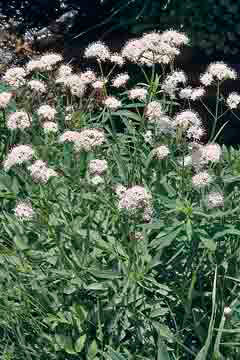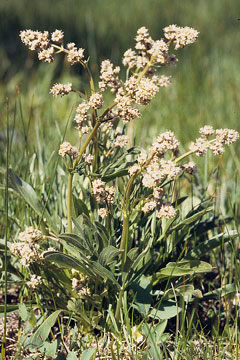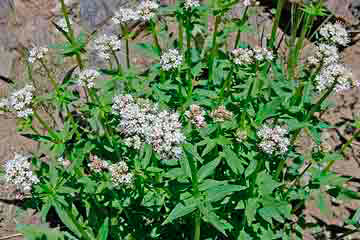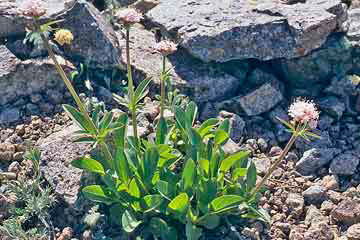
Edible valerian, Valeriana edulis Nutt. ex Torr. & A. Gray (right), or tobacco root, is a conspicuously leafy plant with crowded creamy-white flower clusters on each of several thick stems. The species name, edulis, means “edible” referring to the plants’ bulky roots. Although these were gathered, eaten, and apparently enjoyed by Native Americans, they are, by report, “the most horrid food ever ingested.” (Harrington, HD, Edible Native Plants of the Rocky Mountains). Valerian roots, from which the medically active compound valerianic acid is extracted, have an unpleasant odor which some have compared to smelly socks; it is also said to have a catnip effect on cats..


Sharp-leaf valerian, Valeriana acutiloba Rydb. (leftt) has softly bristled seeds, explaining another common name, “downy-fruited valerian.” The name acutiloba refers to the plants’ pointed leaves, the lower ones made up of three large leaflets. It grows as high as treeline in the mountains of all of the western states, blooming early in the summer while north-facing slopes are still snow covered. The small, sometimes pink-tinged flowers bloom centripetally, as do those in the vervain family (Verbenaceae) explaining another common name, “mountain verbena.”
Northern valerian, Valeriana dioica L. var. sylvatica (Richardson) S. Watson (right). The northern, or marsh, valerian, is a low, stout-stemmed plant usually found in moist mountain meadows to subalpine elevations. The species name, dioica, from the Greek, means “two houses,” signifying that there are both male and female plants. Because this is a circumboreal species, our plant is classified as var. sylvatica, to distinguish it from the slightly different Eurasian variety, var. dioica.
